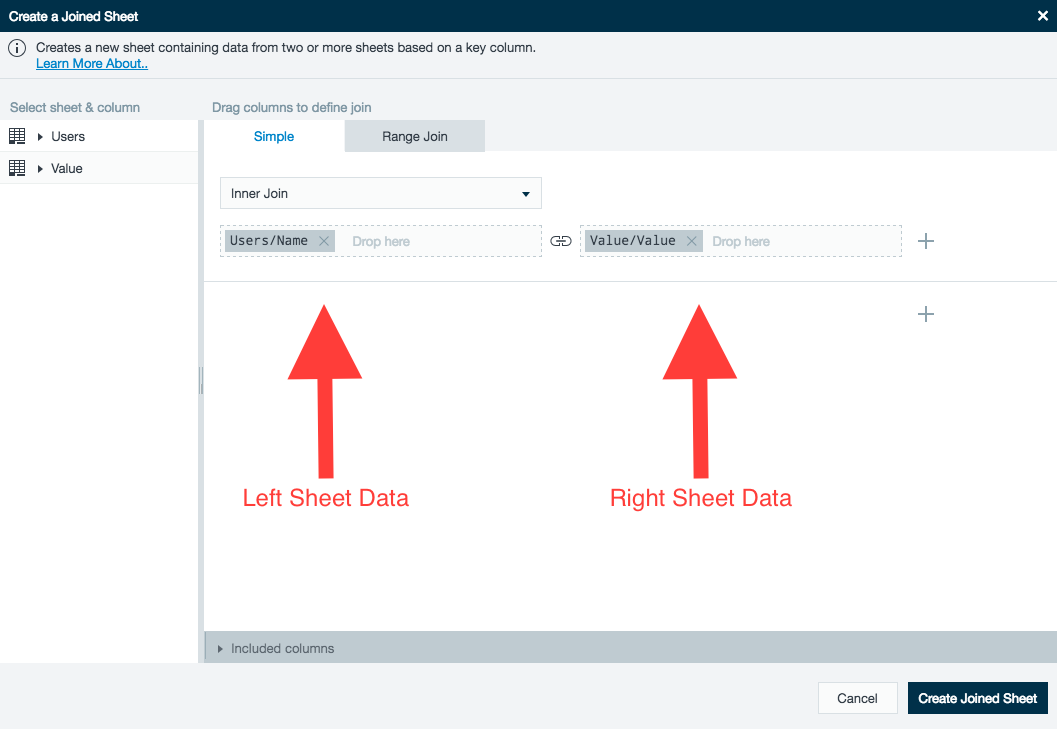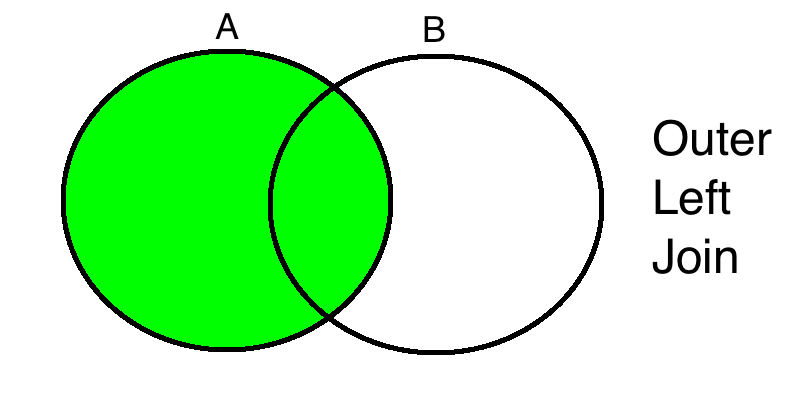Types of Joins
A join creates a new sheet with columns from two or more sheets based on a key column that you define.
There are a variety of different join tools to use based on your needs.
Before getting started, here is an example of where left and right sheet data are located in Datameer.
Inner Join
An inner join returns only the set of records that are contained in both Sheet A and Sheet B.
Full Outer Join
A full outer join returns the set of all records in Sheet A and Sheet B, with matching records from both sides where available. If there aren't any matches, the affected records are paired with a null value.
Outer Left Join
An outer left join returns a complete set of records from the "eft sheet, Sheet A, with the matching records (where available) in Sheet B. If there aren't any matches, the affected records are paired with a null value.
Outer Right Join
An outer right join returns a complete set of records from the right sheet, Sheet B, with the matching records (where available) in Sheet A. If there aren't any matches, the affected records are paired with a null value.
Self Join
A self join combines a sheet with itself returning related records from the same sheet. Self joins are useful when one record falls into two categories. For example, a list of employees would show that John is an analyst, but also that he is head of the department. With a self join you could show that he belongs to both groups.




